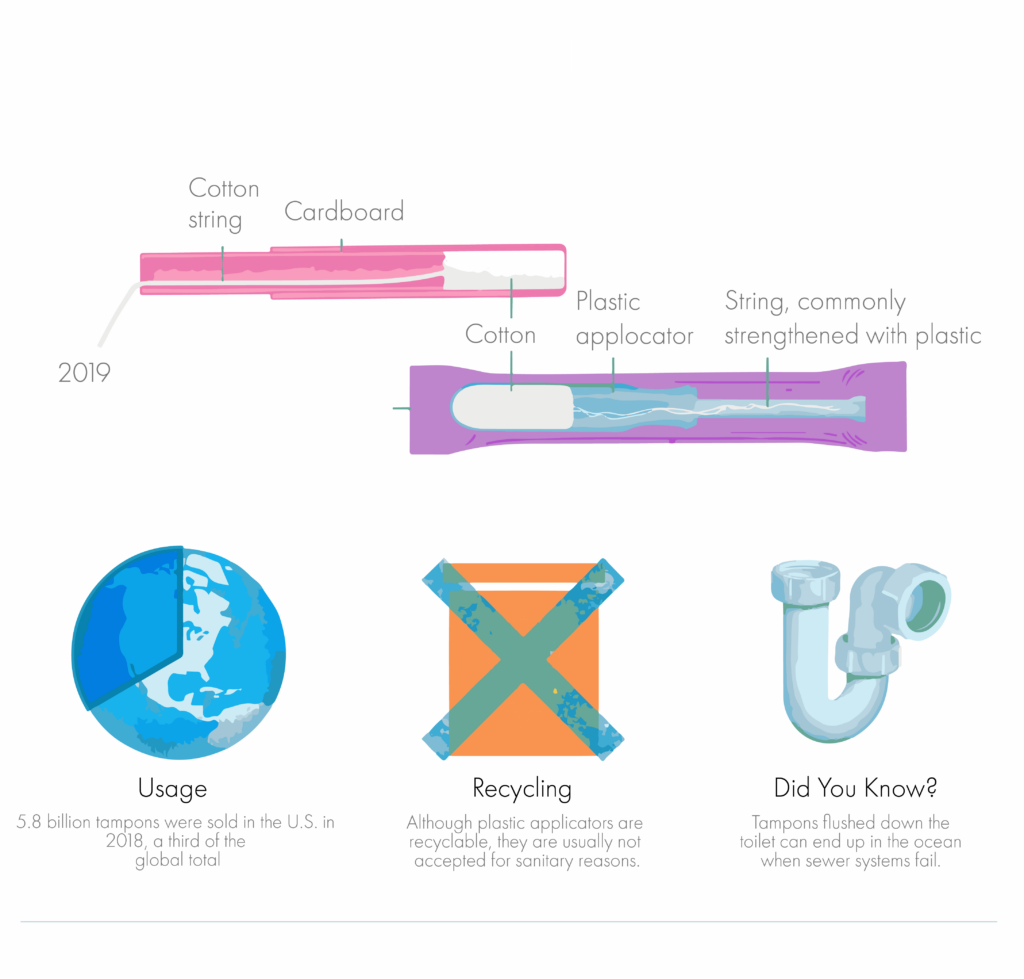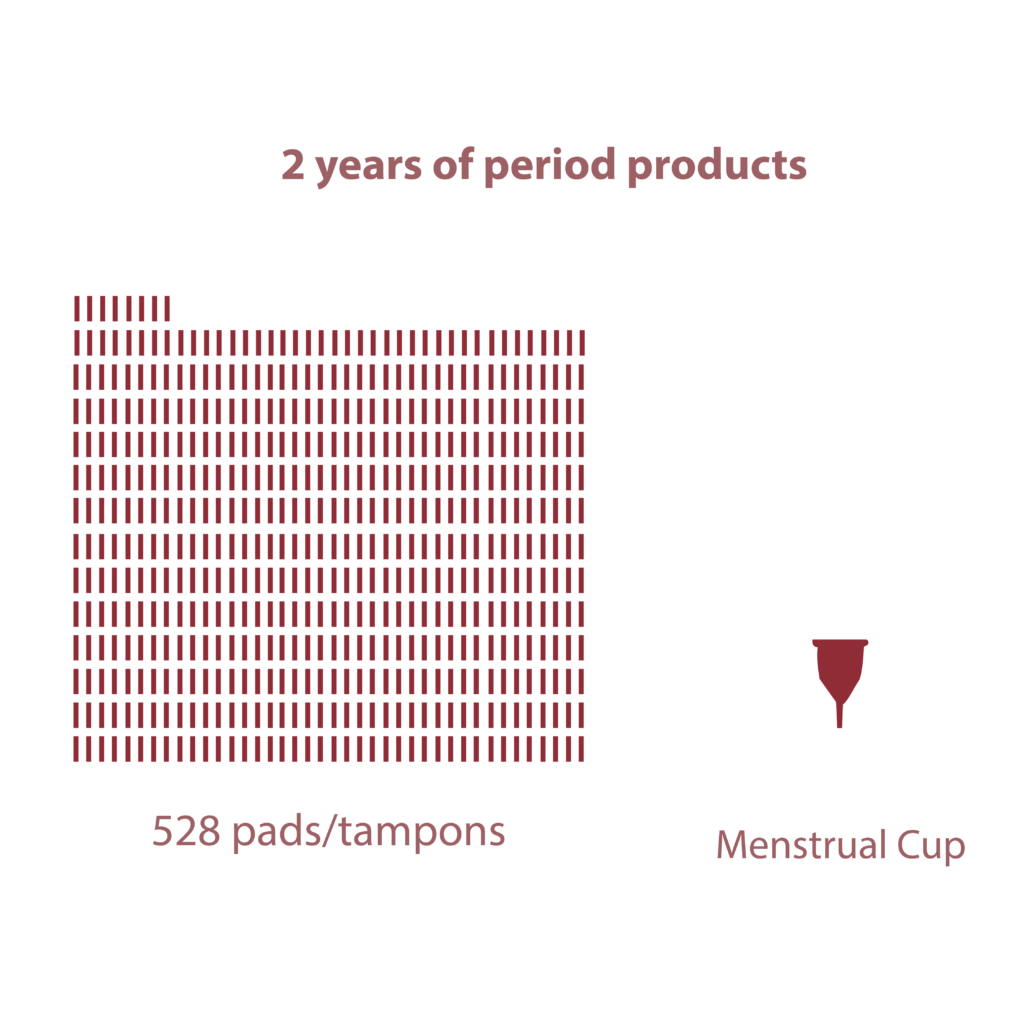Do eco-friendly period products exist?
In today’s society, periods are not excluded from the use of plastic. Plastic has been so normalized, that most tampons and pads have integrated it into their design. The majority of women have become used to using pads and tampons to help with their periods.
A woman uses around 11,000 disposable pads and/or tampons in her lifetime. When you multiply that by the number of women on the planet who have their period, you get quite a lot of garbage.
How many periods does a woman have in her lifetime?
In her lifetime, the average American woman will have around 450 periods. This translates to around 10 years — or approximately 3,500 days — of menstruation. In 2018, women in the United States bought 5.8 billion tampons. A single menstruator will use between 5,000 and 15,000 pads and tampons in her lifetime.
What is considered a conventional menstrual product?
The average disposable pad or tampon can be composed of up to 90% plastic! According to a 2019 research, a single throwaway pad might take 500 to 800 years to degrade. They are made up of chemicals that disrupt the endocrine system.
Phthalates, bisphenols, and parabens, are found in feminine hygiene products that are sold in the United States. Long-term exposure to these substances can disrupt your hormones and lead to malignant tumors.
Approximately 80% of the world’s plastic trash ends up in landfills. Decay can take up to 500 years, releasing harmful substances into the environment. And forming microplastics that endanger the health of ecosystems. In Europe and the United States, around 87 percent and 80 percent, end up in a landfill.
There is good news though! Recently brands started creating sustainable alternatives to the options the conventional products. You may even choose organic since there are several alternatives available. If you still want to use tampons but want to be conscious, consider giving up plastic applicators.


So are there any sustainable alternatives to conventional period items?
The menstrual cup is a green favorite! Because of its easy use, you insert it like a tampon, empty it as required, and clean it with soapy water.
They are reusable, contain no dioxin or rayon, and are simple to care for. Versions composed of natural latex or silicone are available. It’s considered an low cost alternative on the market.
There are also greener solutions for people who like external-use items. Reusable cloth pads are fabric maxi pads that may be machine washed. On one hand, they use water to wash, but on the other, they reduce plastic creation and generate little waste.
If you’re still unsure of these alternative options you might consider cotton tampons. There are tampons that are compostable and 100 percent organic. Some of these are made of 100 percent cotton or natural bamboo. Organic pads that are made from organic cotton, are also a great biodegradable option.


What is the effect of my period on the environment?
A woman is likely to dispose of 400 pounds of period product packaging in her lifetime. About 12 billion pads and 7 billion tampons are thrown out in the United States, leaving a carbon footprint that is equal to 5.3 kilograms (12 pounds) of CO2. Tampons, pads, panty liners, packaging, and wrapping generate more than 200,000 metric tons of waste annually. Additionally, period products made from plastic and non-compostable materials can take anywhere between 500 and 800 years to decompose.
| Product | Material | Usage |
| Sanitary napkins and tampons | Contain Super Adsorbent Polymers (SAP) and plastics | One time |
| Cloth-based sanitary napkins | Cloth and Hemp (plant material) | Reusable – 1 to 2 years |
| Menstrual Cups | Medical grade silicone | Reusable – 5 to 10 years |
| Compostable/ biodegradable sanitary napkins | – Natural ingredients like cotton, wood pulp, banana fiber, sugarcane. – Organic cotton with a bioplastic layer in some cases. | One time |
Source: WaterAid and MHAI (Menstrual Hygiene Alliance of India)
What is the most environmentally friendly option?
The most environmentally friendly option is one that is reusable, long-term, and includes less plastic usage, waste going into landfills, and reduced greenhouse gas emissions. But, your period management style does not have to be a particular product type.
What period product is right for me?
At the end of the day, you should make sure you consider your needs and lifestyle. Consider switching to reusable pads or period underwear if you generally use pads.
Keep your eyes open for items with transparent ingredient lists! Unfortunately, manufacturers are not required to disclose ingredient lists.
Menstrual cups are usually the most cost-effective solution if you consider the cost. Other options include period underwear and reusable pads.